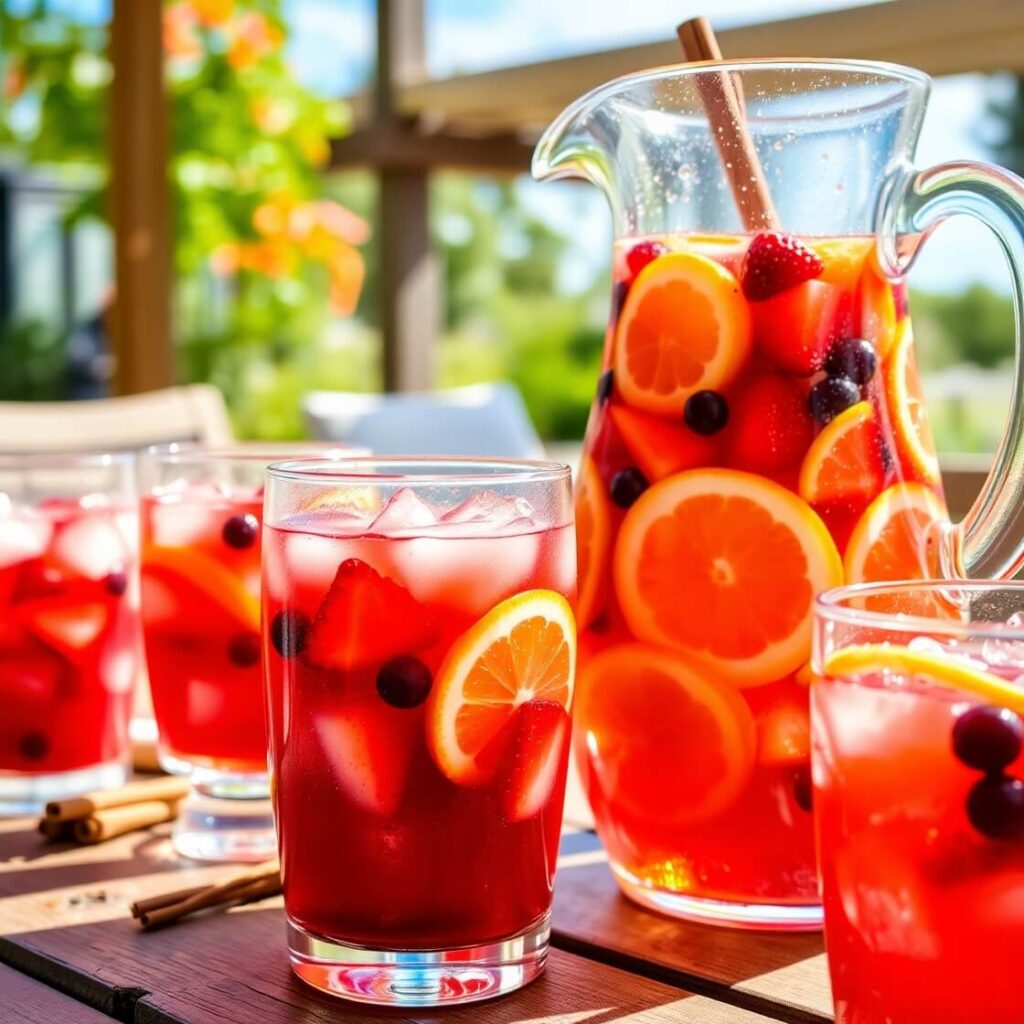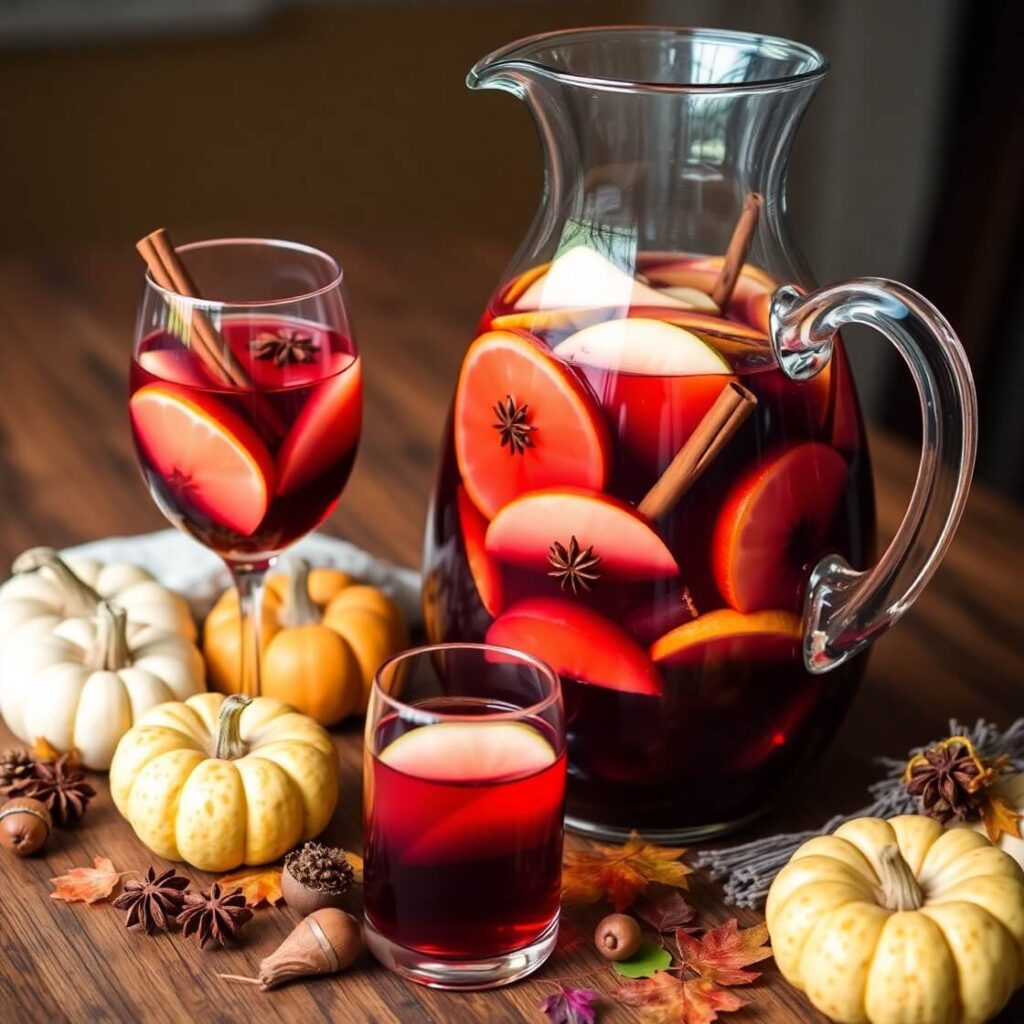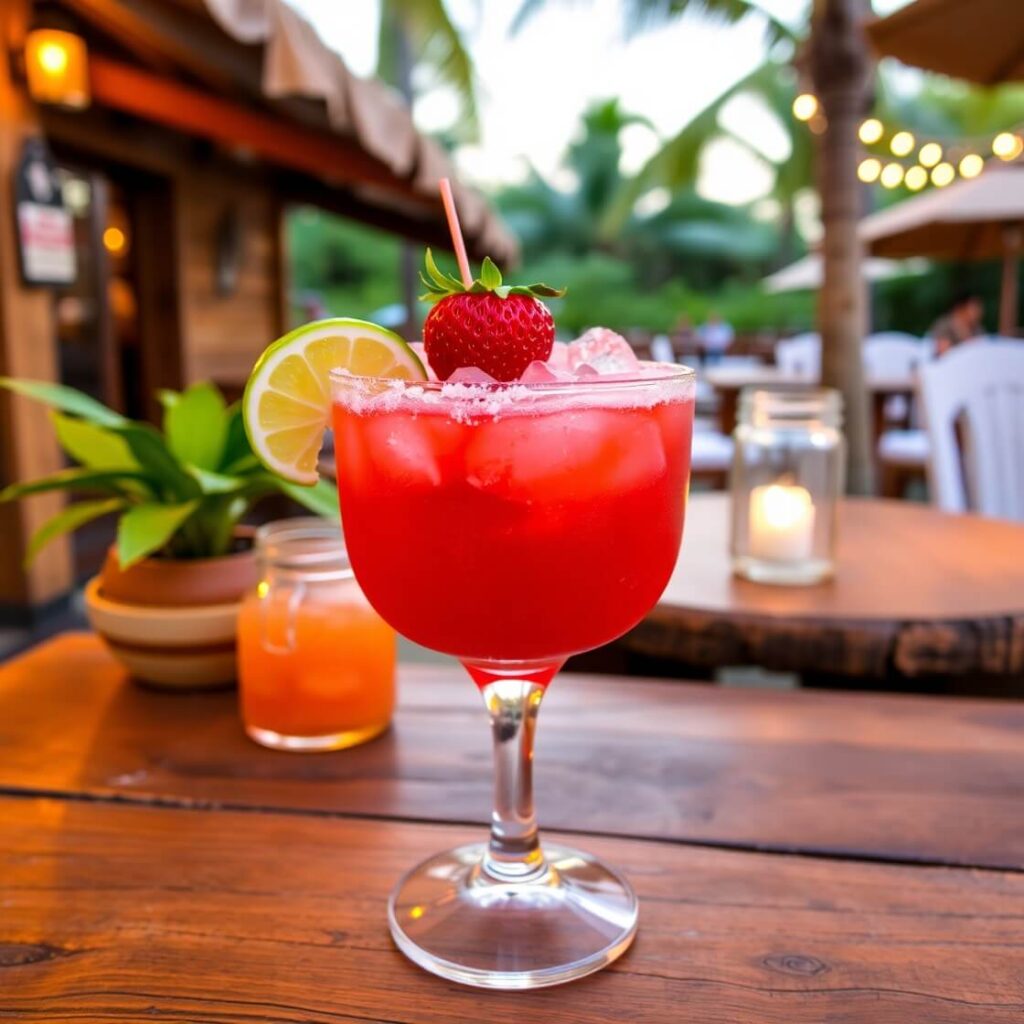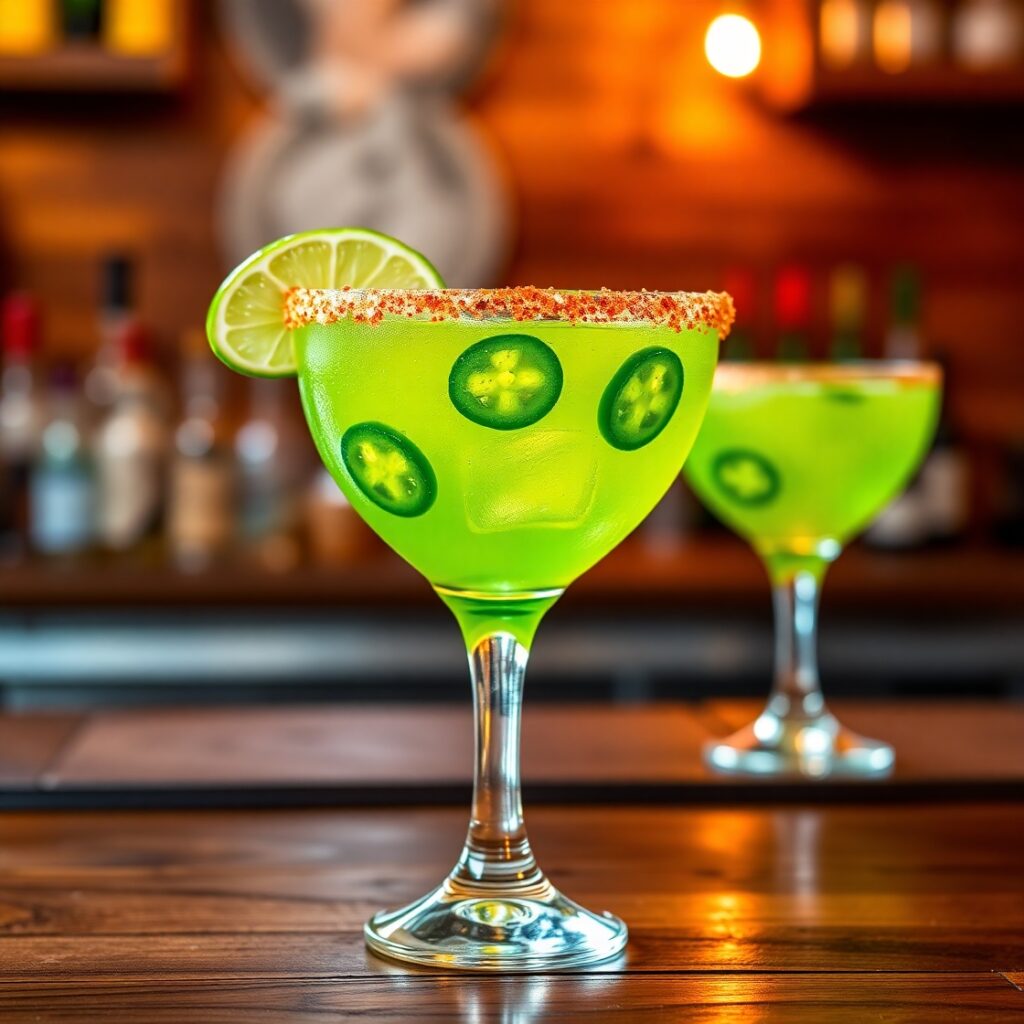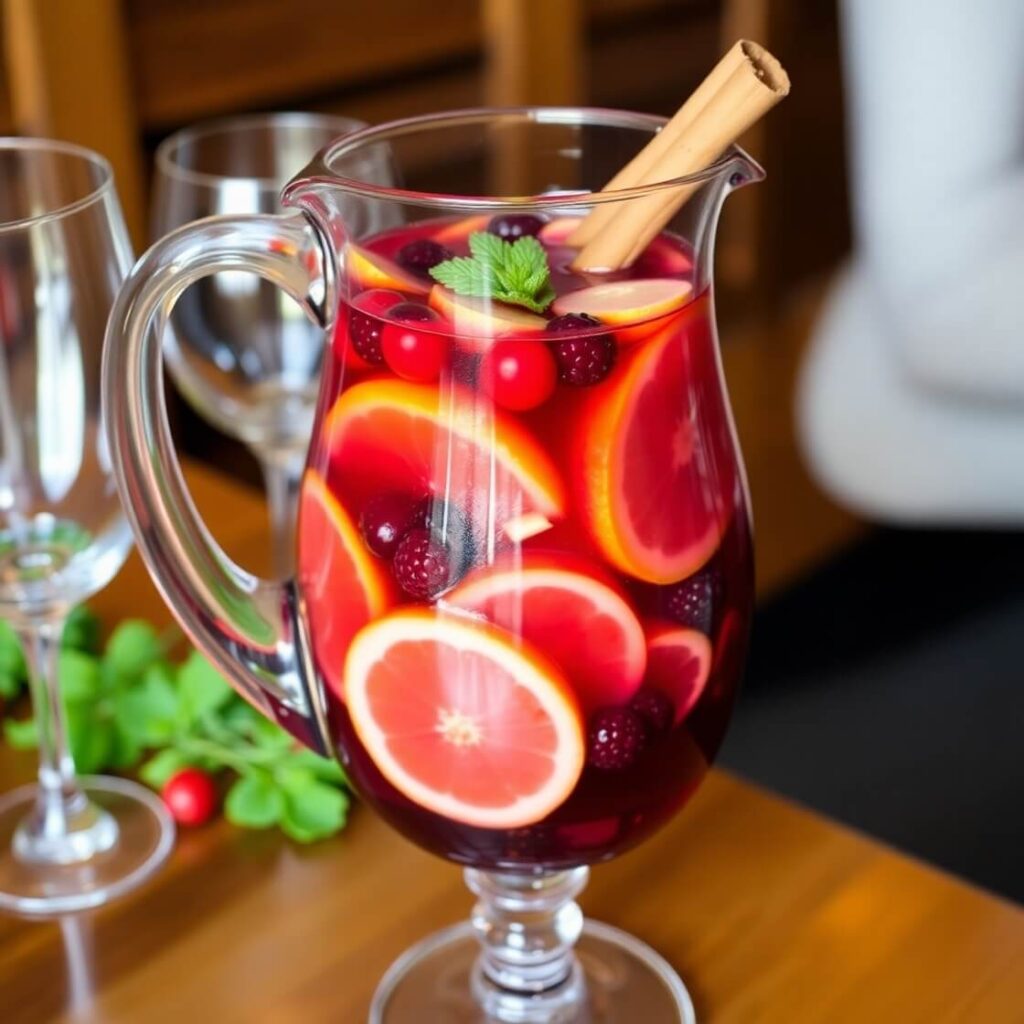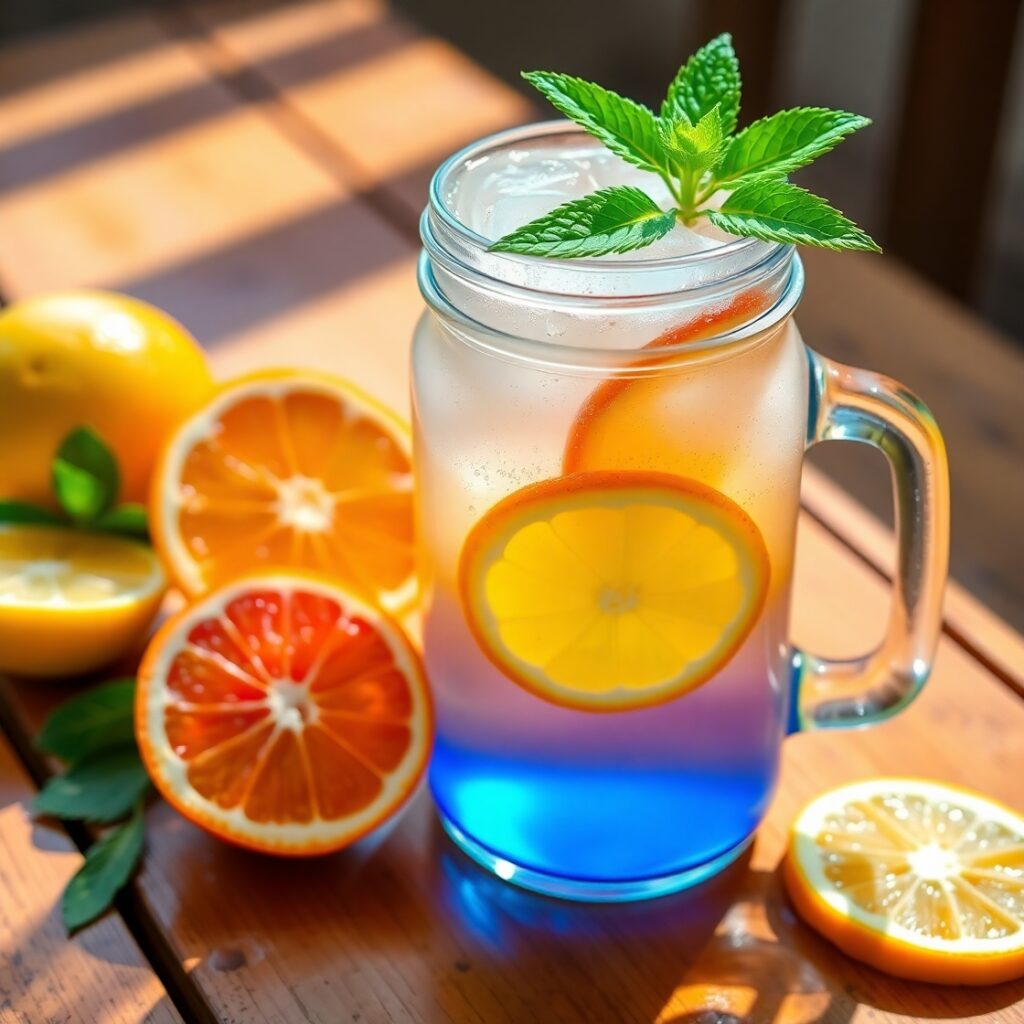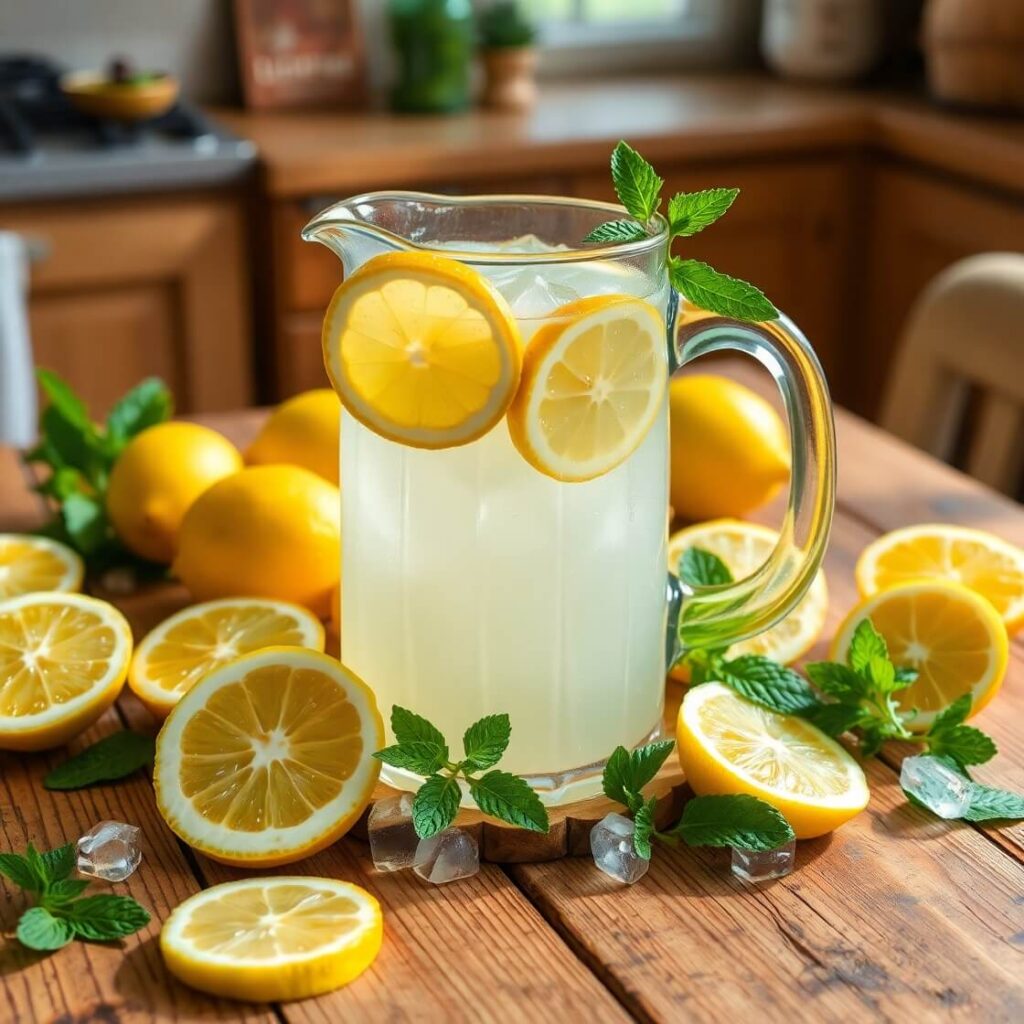Sangria Recipe
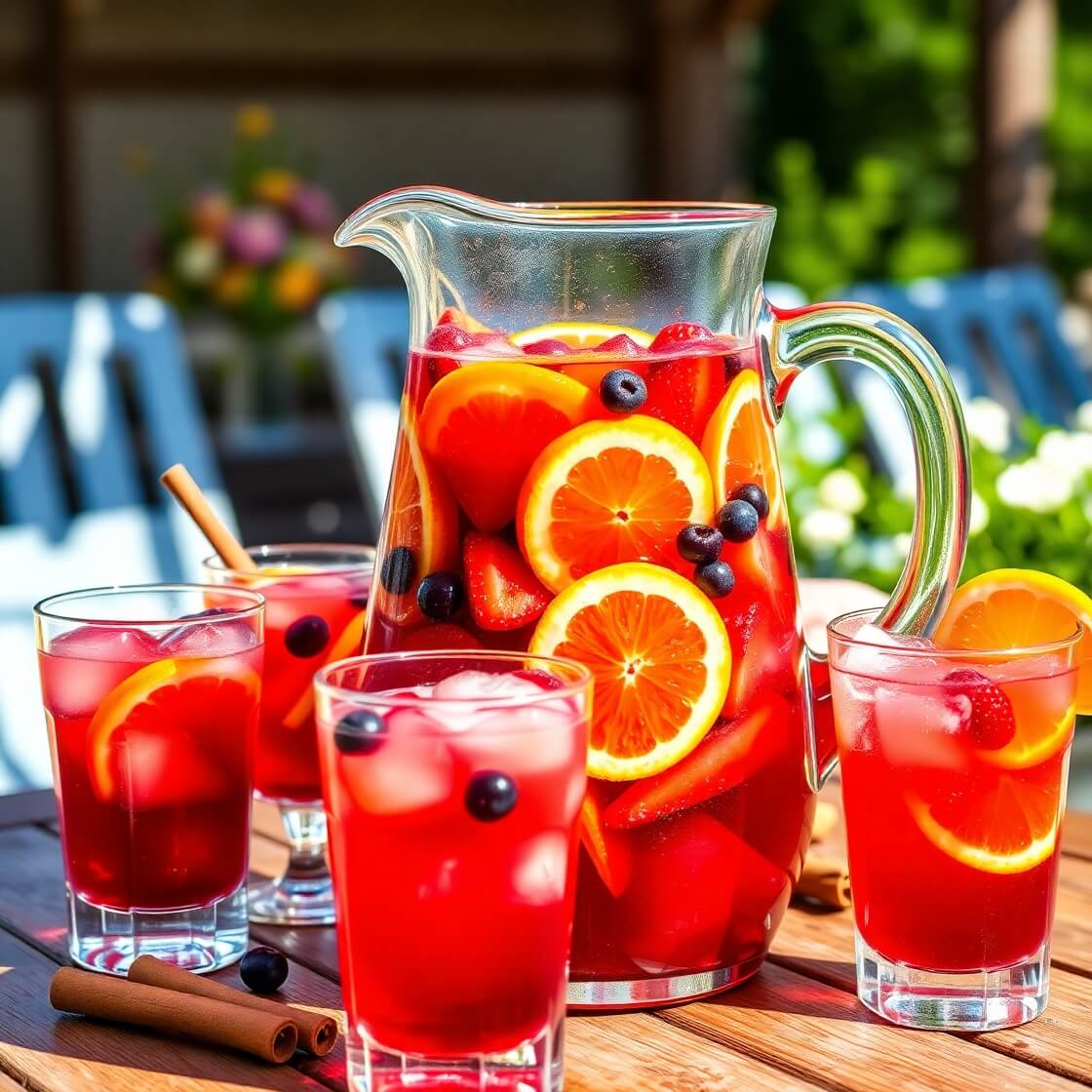
Last summer, I found myself wandering through a bustling farmers’ market in Seville, Spain. The scent of fresh oranges mingled with sun-warmed wine spilling from street-side stalls. I watched a vendor slice vibrant fruit into bowls, pour in ruby-red wine, and sprinkle in a touch of something mysterious. By the time I took a sip, I was hooked. That first taste of sangria wasn’t just refreshing—it was a sensory memory: citrusy, sweet, a little boozy, and entirely festive. Ever since, I’ve tried to capture that perfect balance in my own kitchen.
The first time I made it at home, I overdid the sugar, and my husband jokingly called it “dessert in a pitcher.” But with a few tweaks and attention to fresh, juicy fruit, I finally recreated that bright, lively flavor I fell in love with in Seville. And the best part? Sangria has this magical way of bringing everyone together—family dinners, casual weekend brunches, or even impromptu porch parties feel instantly more celebratory with a chilled pitcher in hand.
The Secret Behind Its Flavor
Sangria is all about balance. The fruit should be sweet but not cloying, the wine bold but not overpowering, and the hints of citrus or spice should lift the whole experience. My trick is simple: choose a fruit-forward red wine, fresh seasonal fruit, and let the flavors mingle for at least a few hours in the fridge.
I like adding a splash of orange liqueur—triple sec or Cointreau works perfectly—but only enough to highlight the natural sweetness of the fruit. A small touch of sparkling water or soda before serving gives it a light, effervescent feel that makes each sip feel like a summer breeze. The magic happens when the ingredients sit together overnight; that’s when the flavors really harmonize.
Ingredients in Context
When I go shopping for sangria, I treat it like a mini adventure. You don’t need fancy wines; a fruity, medium-bodied red like Garnacha or Tempranillo is perfect. If you prefer something lighter, Pinot Noir or a juicy Zinfandel works too.
For fruit, I stick with what’s seasonal. Oranges, lemons, and limes are a must—they bring brightness and a little zing. I also add berries or peaches when they’re in season; their sweetness rounds out the acidity of the citrus. One tip I’ve learned from trial and error: always slice fruit thinly so it can soak up the wine quickly, and avoid overripe fruit that turns mushy overnight.
Optional extras like a cinnamon stick, star anise, or a sprig of fresh mint add depth, but only a whisper—sangria should taste lively, not spiced like mulled wine. And for a little sparkle, a small pour of soda or sparkling water right before serving makes it irresistible.
Step-by-Step Instructions
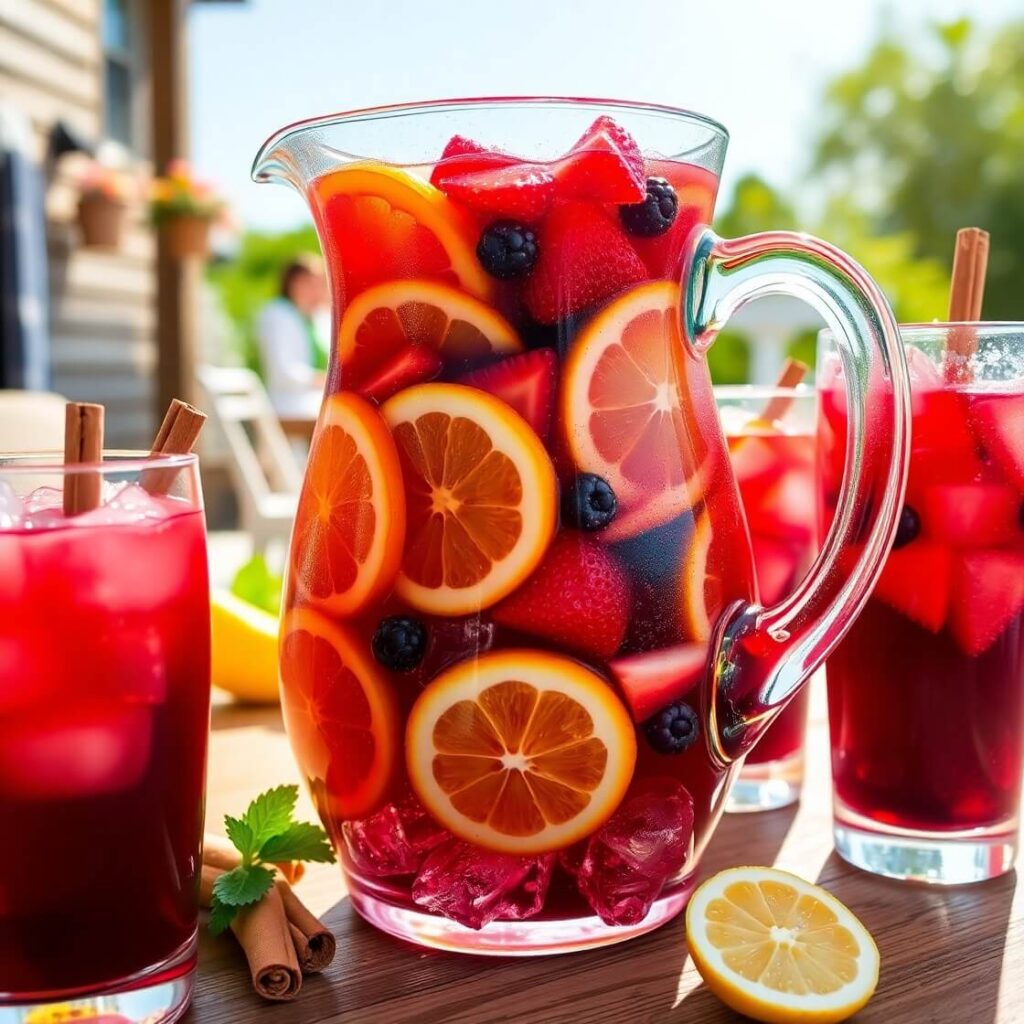
The steps are simple, but attention to detail makes all the difference.
- Start by slicing your citrus: thin rounds of oranges, lemons, and limes. I like to leave the peel on—it adds subtle bitterness and fragrance.
- Chop any additional fruit into bite-sized pieces. Peaches, berries, and apples work beautifully.
- Pour the wine into a large pitcher. Add a splash of orange liqueur if using.
- Gently stir in the fruit and a little sugar (start with 1–2 tablespoons; adjust to taste).
- Let the mixture sit in the fridge for at least 4 hours—or ideally overnight. This lets the fruit release its juices and the wine absorb the flavors.
- Just before serving, add ice and a splash of sparkling water if you want a lighter, bubbly finish.
I remember the first time I tried skipping the resting time—impatient as I was. The flavor was flat, and the fruit hadn’t fully released its juices. Now, I never rush it; the wait is worth every sip.
Substitutions & Adaptations
Sangria is wonderfully flexible. You can easily adapt it to suit dietary needs or taste preferences:
- Vegan: Stick to wine labeled vegan-friendly and natural sweeteners like agave or maple syrup.
- Non-alcoholic: Replace wine with grape juice or a mix of cranberry and pomegranate juice, and use sparkling water instead of soda for fizz.
- Kid-friendly: Skip the alcohol entirely and create a “mocktail” version with orange juice, cranberry juice, and a splash of club soda.
- Gluten-free: Most wines are naturally gluten-free, but double-check any liqueurs you add.
For a personal twist, I sometimes sneak in tropical fruits like pineapple or mango. The first time I tried it, the flavors clashed a bit, but a touch of lime juice smoothed it out beautifully.
Elevating Your Sangria Experience
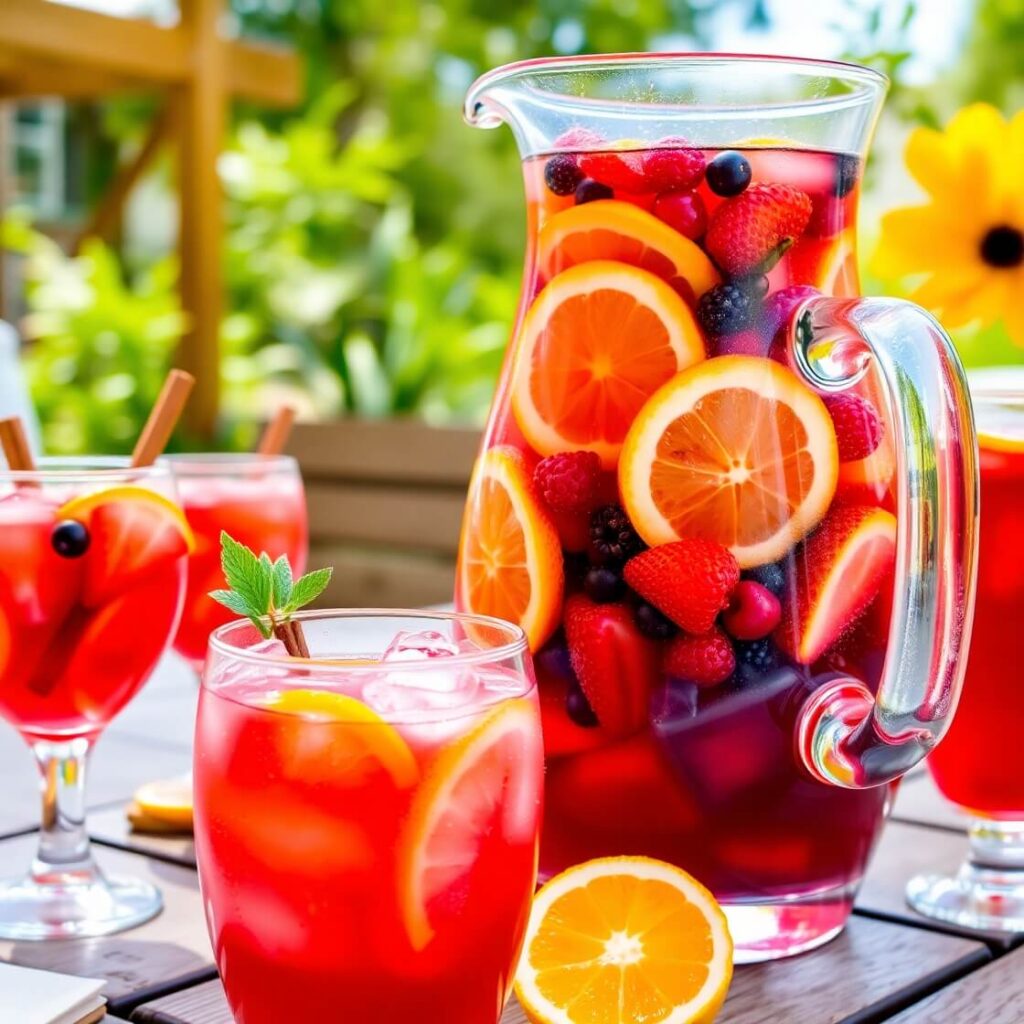
One of my favorite things about making sangria is how you can play with presentation. I love clear glass pitchers or jars so the colorful fruit layers shine through. Adding a few fresh mint sprigs or a thin slice of citrus on the rim instantly makes it look festive. Once, I served sangria at a small family brunch and realized I’d forgotten the ice—the vibrant pitcher alone made everyone smile, but a few ice cubes really bring it to life.
For a casual dinner party, I like serving sangria in short, wide glasses so each sip includes a piece of fruit. Long-stemmed wine glasses work beautifully too, especially if you’re going for an elegant vibe. Don’t forget a tiny spoon or a cocktail pick so guests can fish out the fruit—they love it almost as much as the drink itself.
Pro Notes & Mistakes to Avoid
Making sangria seems straightforward, but a few lessons from my kitchen mishaps can save you trouble:
- Don’t skimp on chilling: Sangria tastes best cold, and the flavors deepen when it rests for several hours. Trust me, the impatience of tasting too soon leads to disappointment.
- Be cautious with sugar: It’s easy to over-sweeten. Start small and taste after a few hours—fruits release natural sweetness as they soak.
- Fruit quality matters: Overripe or bruised fruit turns mushy and can make the sangria bitter. Fresh, firm slices make the drink visually stunning and flavorful.
- Balance the fizz: If adding soda or sparkling water, do it just before serving. Otherwise, the bubbles fade and the sangria can taste flat.
Once, I accidentally added sparkling water too early, and the fizz vanished within minutes. Now it’s a ritual: fridge first, bubbles last.
Storage & Make-Ahead Tips
Sangria is forgiving but has its limits. Here’s how to make it ahead without losing flavor:
- Store in the refrigerator for up to 2 days. After that, fruit can become too mushy, and the wine starts to lose its brightness.
- Keep soda or sparkling water separate until serving to preserve effervescence.
- If you plan to transport sangria to a picnic or party, pack fruit and wine together in a sealed pitcher and add ice and soda on site.
Pro tip: If your sangria tastes slightly too strong after sitting overnight, a splash of cold water or extra fruit juice can mellow it beautifully.
Frequently Asked Questions
Can I make sangria with white wine?
Absolutely! White sangria is lighter and crisp, perfect for summer afternoons. Use a fruity white like Sauvignon Blanc or Pinot Grigio and pair with tropical fruits like peaches, pineapple, and green grapes.
Can sangria be frozen?
Not recommended. Freezing changes the texture of the fruit and can dull the wine’s flavor. Stick to refrigeration.
What’s the best wine for sangria?
Medium-bodied, fruit-forward wines work best. Garnacha, Tempranillo, or Zinfandel are all great choices. Avoid heavily oaked wines—they can overwhelm the fruit.
Can I make sangria for kids?
Yes! Use grape juice, cranberry juice, and sparkling water instead of wine. Add the same fresh fruit for visual appeal.
How long should sangria rest?
Minimum 4 hours, ideally overnight. This allows fruit to infuse the wine and flavors to meld.

Sangria Recipe
- Total Time: 2.5-4.5 hours
- Yield: 8 1x
- Diet: Vegetarian
Description
Sangria is a refreshing and vibrant Spanish punch made with wine, fresh fruit, and a splash of brandy. Perfect for warm weather gatherings, it’s a drink that brings people together and adds a celebratory touch to any event. The wine is complemented by the natural sweetness of the fruit, and a splash of brandy or rum adds depth. It’s a crowd-pleaser, easy to prepare, and ideal for making in large batches.
Ingredients
- 1 bottle of red wine (such as Tempranillo or Cabernet Sauvignon)
- 1 orange, thinly sliced
- 1 lemon, thinly sliced
- 1 apple (optional), chopped
- 1 cup mixed berries (strawberries, blueberries, or raspberries)
- 1/4 cup brandy
- 2 tablespoons sugar or honey (optional)
- 1–2 cups club soda or sparkling water
- 1 cinnamon stick (optional)
Instructions
- Wash and slice the fruit into thin pieces, and chop any larger fruits like apples.
- In a large pitcher or bowl, combine the wine with the fruit.
- Add the brandy and sweetener of your choice, stirring until well combined.
- Let the sangria chill in the refrigerator for at least 2 hours, ideally overnight.
- Just before serving, add the club soda or sparkling water for a bit of fizz.
- Stir gently and serve chilled with ice and garnishes like extra citrus slices or a cinnamon stick.
Notes
- For an added twist, experiment with different fruits or substitute white wine for a lighter sangria.
- Prep Time: 15 minutes
- Cook Time: 15 minutes
- Category: Beverage
- Method: No-cook
- Cuisine: Spanish
Nutrition
- Serving Size: 8
- Calories: 150
- Sugar: 15g
- Sodium: 10mg
- Fat: 0g
- Saturated Fat: 0g
- Unsaturated Fat: 0g
- Trans Fat: 0g
- Carbohydrates: 18g
- Fiber: 2g
- Protein: 1g
- Cholesterol: 0mg

